Taxonomy
Family: Megachilidae
Subfamily: Megachilinae
Tribe: Anthidiini
Genus: Pseudoanthidium, Friese 1898
Subgenus: Pseudoanthidium, Friese 1898
Species: Pseudoanthidium scapulare, Latreille 1809
Background
Pseudoanthidium scapulare relatively small, 6–9 mm bees. They have a predominantly black
integumentintegument:
a tough, protective outer layer
with symmetrical yellow spots on their face,
scutumscutum:
the large segment on top of the thorax located between the wings and behind the head
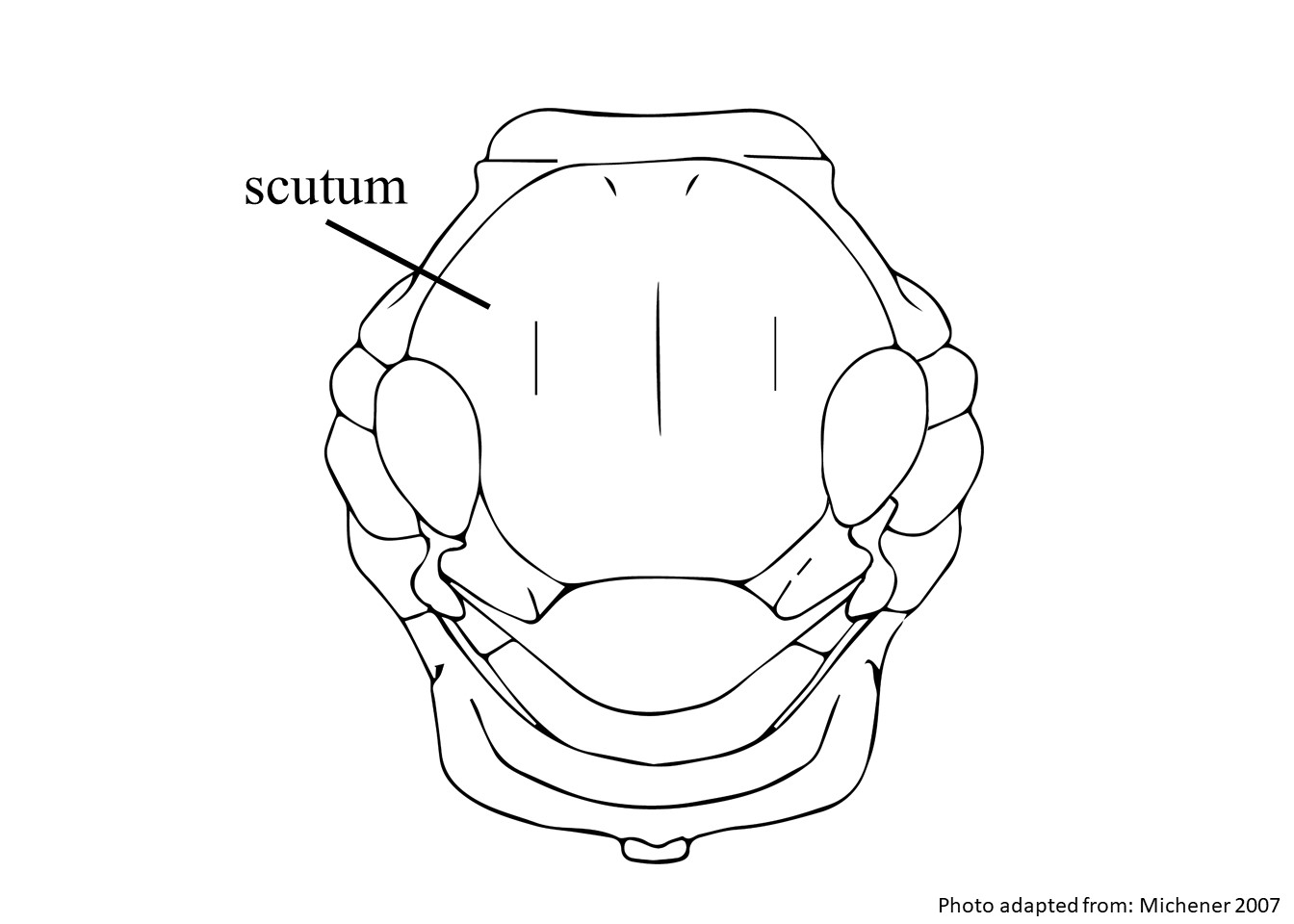
,
scutellumscutellum:
shield shaped plate behind scutum
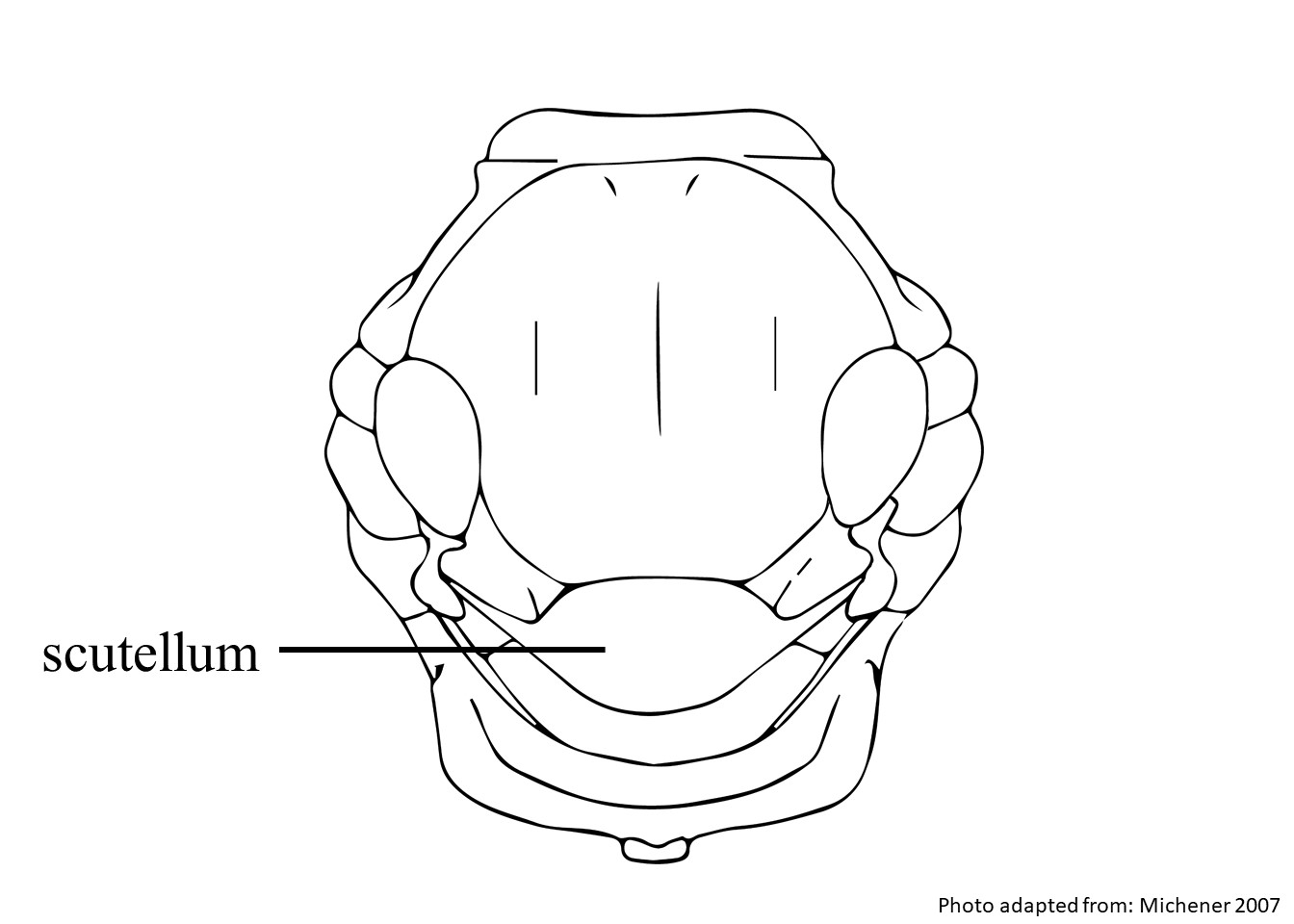
, and
tergaterga:
the segments on the top side of the abdomen, often abbreviated when referring to a specific segment to T1, T2, T3, T4, T5, T6, or T7
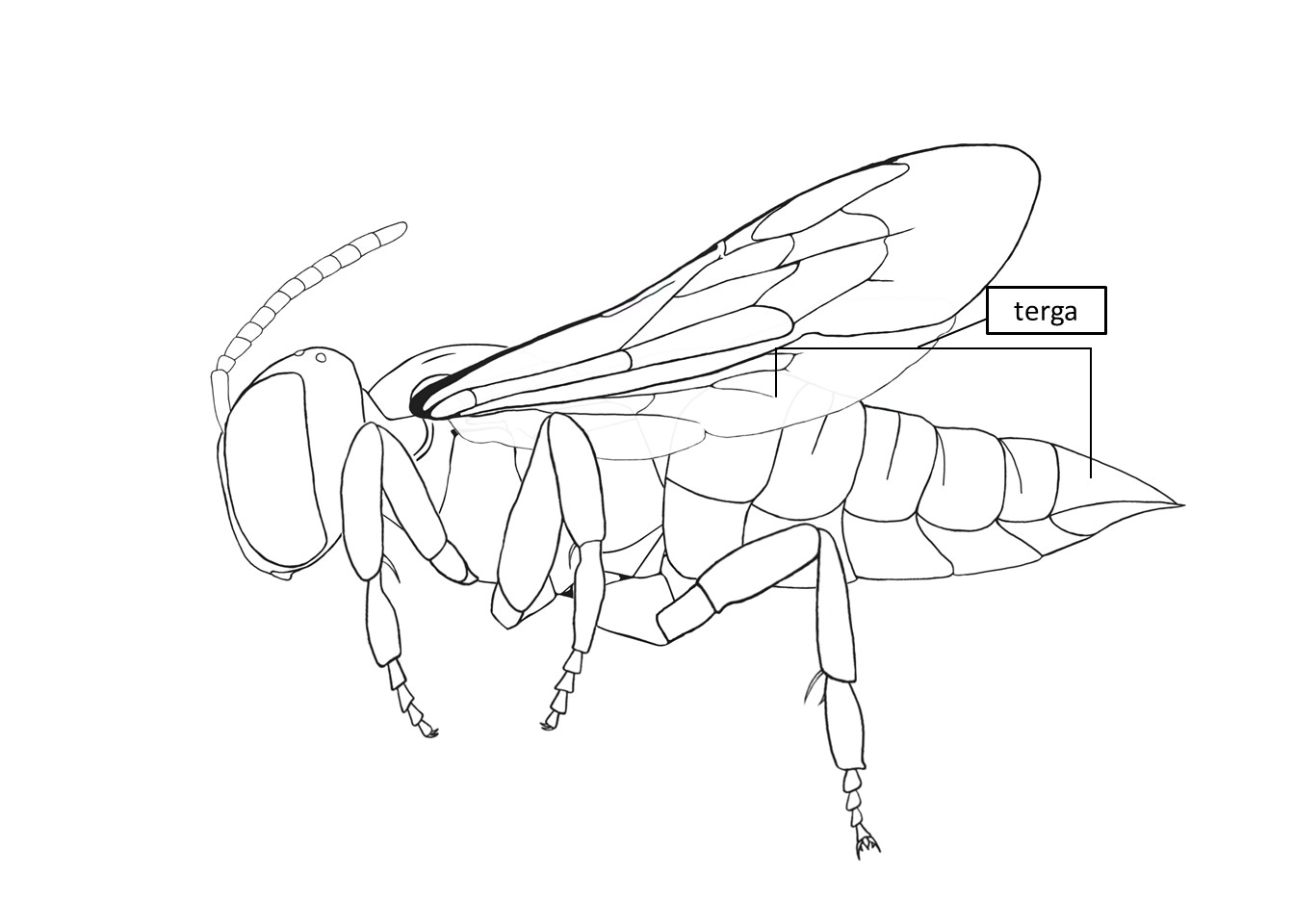
. Their legs are primarily yellow with black on their
basalbasal:
originating at the foundation of a structure
segments. Their wings are translucent and sometimes slightly brown.
Distribution
Pseudoanthidium scapulare found in the Western Mediterranean region (
Litman et al. 2021Litman et al. 2021:
Litman, J. R., Fateryga, A. V., Griswold, T. L., Aubert, M., Proshchalykin, M. Y., Le Divelec, R., Burrows, S. & Praz, C. J. 2022. Paraphyly and low levels of genetic divergence in morphologically distinct taxa: revision of the Pseudoanthidium scapulare complex of carder bees (Apoidea: Megachilidae: Anthidiini). Zoological Journal of the Linnean Society, 195(4): 1287-1337.).

Distribution map generated by Discover Life -- click on map for details, credits, and terms of use.
Host associations
Pseudoanthidium scapulare seems to prefer plants in the Asteraceae family and has been found visiting a number of genera in that family including:
Atractylis, Carduus, Centaurea, Cynara, and
Onopordum (
Aguib 2010Aguib 2010:
Aguib, S., K. Louadi, and M. Schwarz. 2010. The Anthidiini (Megachilidae, Megachilinae) of Algeria with three new species for this country: Anthidium (Anthidium) florentinum (FABRICIUS, 1775), Anthidium (Proanthidium) amabile ALFKEN, 1932 and Pseudoanthidium (Exanthidium) enslini (ALFKEN, 1928). Entomofauna, 31(12): 121-152.). It has also been reported visiting the Verbenaceae species
Verbena officinalis (
Aguib 2010Aguib 2010:
Aguib, S., K. Louadi, and M. Schwarz. 2010. The Anthidiini (Megachilidae, Megachilinae) of Algeria with three new species for this country: Anthidium (Anthidium) florentinum (FABRICIUS, 1775), Anthidium (Proanthidium) amabile ALFKEN, 1932 and Pseudoanthidium (Exanthidium) enslini (ALFKEN, 1928). Entomofauna, 31(12): 121-152.).
Diagnostic characteristics
(Modified from Litman et al. 2021Litman et al. 2021:
Litman, J. R., Fateryga, A. V., Griswold, T. L., Aubert, M., Proshchalykin, M. Y., Le Divelec, R., Burrows, S. & Praz, C. J. 2022. Paraphyly and low levels of genetic divergence in morphologically distinct taxa: revision of the Pseudoanthidium scapulare complex of carder bees (Apoidea: Megachilidae: Anthidiini). Zoological Journal of the Linnean Society, 195(4): 1287-1337.)
-
Female T1–T2 punctationpunctation:
overall pattern of the punctures on a surface of a bee, includes size of punctures and the distance between them
relatively dense with shagreened interspaces.
-
Male gonostylusgonostylus:
the apical-most appendage of the male genitalia, which is usually quite hairy
approximately 1.25x wider at the apexapex:
end of any structure
than the base. Notch at the apexapex:
end of any structure
deep, distinctly deeper than width at opening.
-
Male S3S3:
the plates on the underside of the abdomen, often abbreviated when referring to a specific segment to S1, S2, S3, S4, S5, S6, S7, or S8
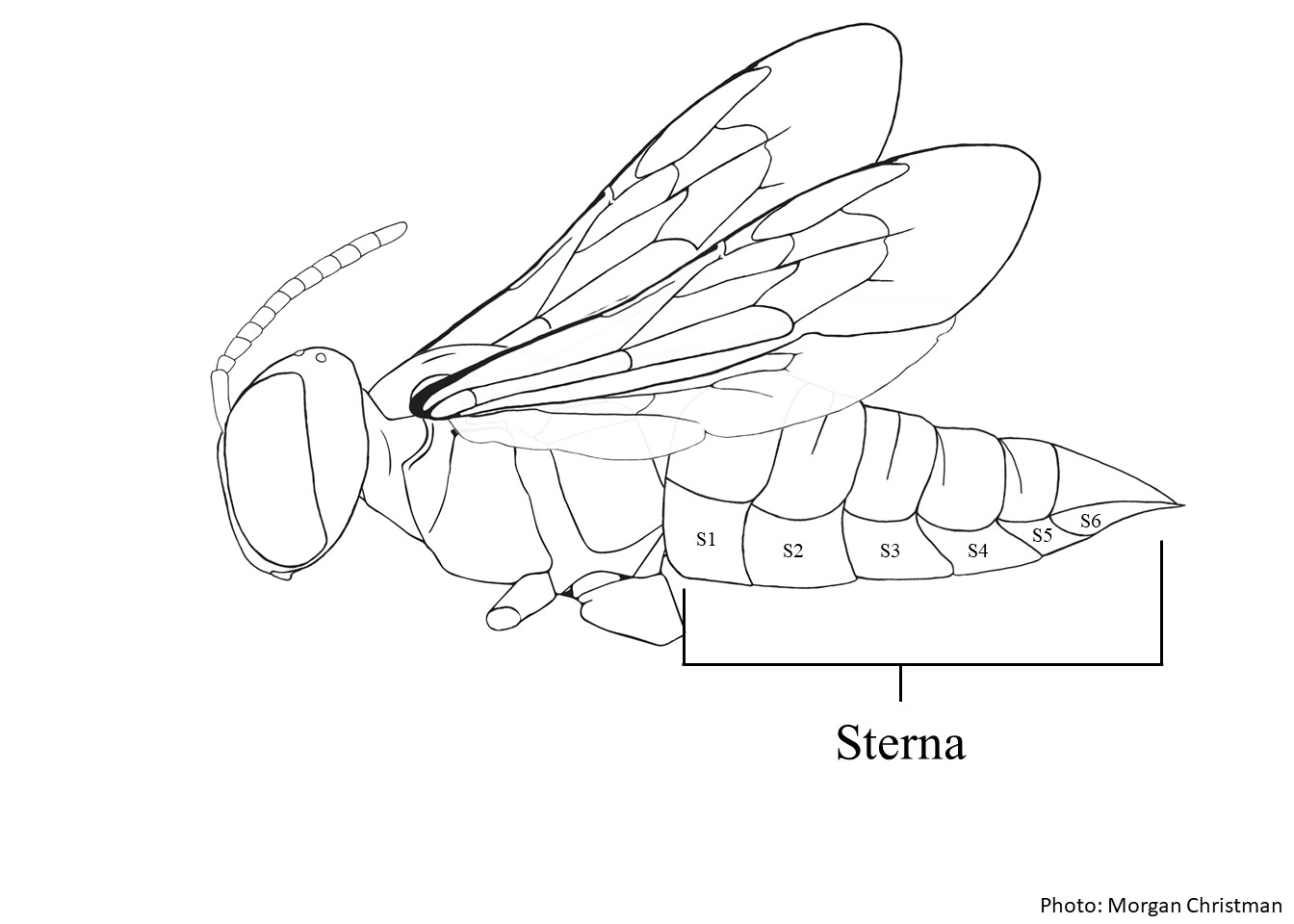 premarginal brush with strongly hooked hairs at the tips.
premarginal brush with strongly hooked hairs at the tips.
-
Male S3S3:
the plates on the underside of the abdomen, often abbreviated when referring to a specific segment to S1, S2, S3, S4, S5, S6, S7, or S8
 with a mostly straight, shiny, hairless zone that extends as a carinacarina:
with a mostly straight, shiny, hairless zone that extends as a carinacarina:
a clearly defined ridge or keel, not necessarily high or acute; usually appears on bees as simply a raised line
along the midline of the sternum.
-
Male laterallateral:
relating, pertaining, or attached to the side
combs on S5S5:
the plates on the underside of the abdomen, often abbreviated when referring to a specific segment to S1, S2, S3, S4, S5, S6, S7, or S8
 chevron-shaped.
chevron-shaped.
-
Male third trochantertrochanter:
segment of the insect leg between the coxa and the femur
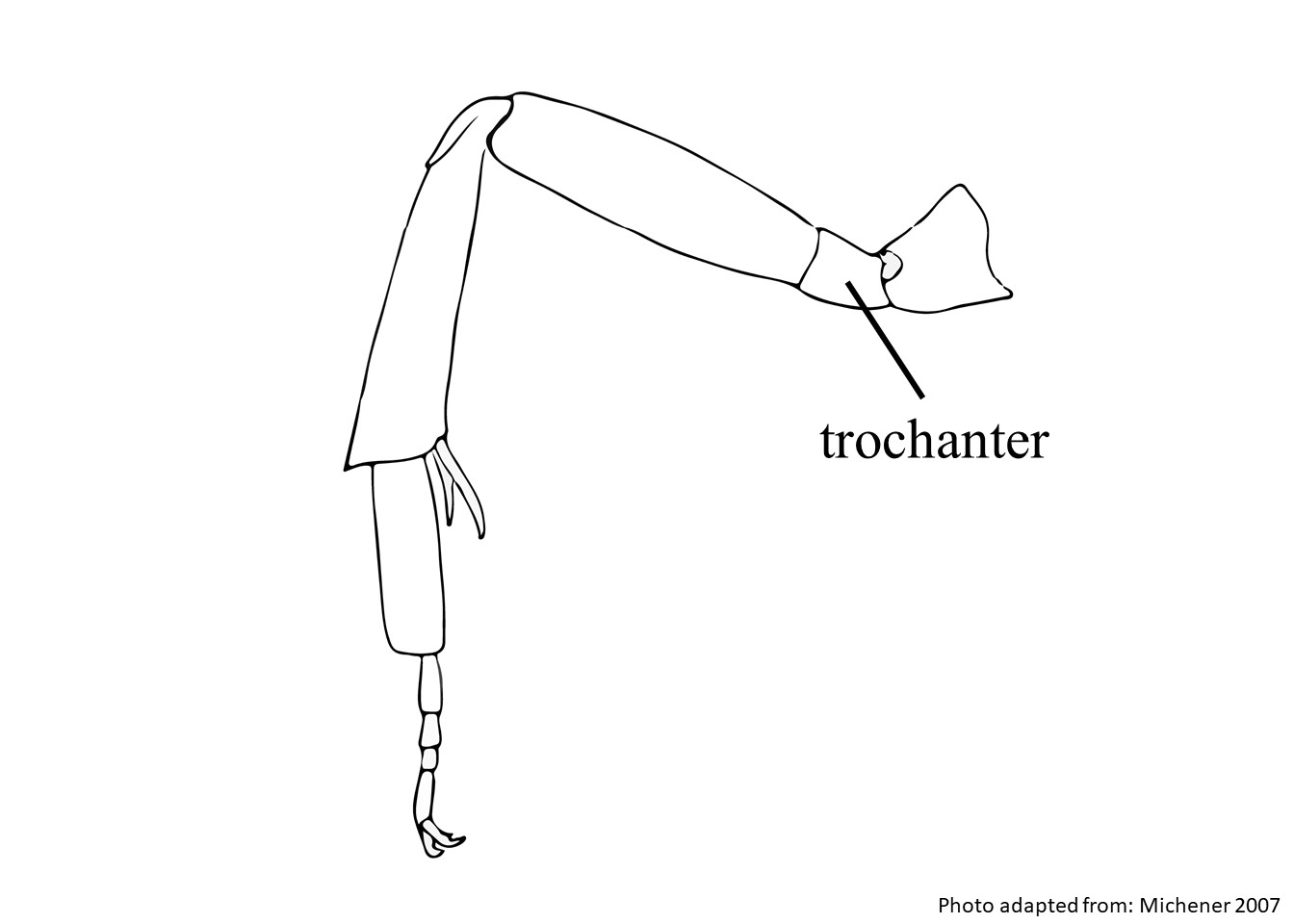 hairs short, velvety, and dense.
hairs short, velvety, and dense.
May be confused with
Pseudoanthidium scapulare are most similar to
P. nanum. Males can be distinguished by the chevron-shaped
laterallateral:
relating, pertaining, or attached to the side
combs on
S5S5:
the plates on the underside of the abdomen, often abbreviated when referring to a specific segment to S1, S2, S3, S4, S5, S6, S7, or S8

. Females can be distinguished by the slightly shagreened interspaces between the punctures on the
tergaterga:
the segments on the top side of the abdomen, often abbreviated when referring to a specific segment to T1, T2, T3, T4, T5, T6, or T7

.
Nesting behavior
Little is known about the nesting biology of
Pseudoanthidium scapulare but most species of
Pseudoanthidium nest in pre-existing cavities like in wood, stems, galls or crevices (
Litman et al. 2021Litman et al. 2021:
Litman, J. R., Fateryga, A. V., Griswold, T. L., Aubert, M., Proshchalykin, M. Y., Le Divelec, R., Burrows, S. & Praz, C. J. 2022. Paraphyly and low levels of genetic divergence in morphologically distinct taxa: revision of the Pseudoanthidium scapulare complex of carder bees (Apoidea: Megachilidae: Anthidiini). Zoological Journal of the Linnean Society, 195(4): 1287-1337.).
Known invasives
There are no known invasives.
 . Their legs are primarily yellow with black on their basalbasal:
. Their legs are primarily yellow with black on their basalbasal: premarginal brush with strongly hooked hairs at the tips.
premarginal brush with strongly hooked hairs at the tips. with a mostly straight, shiny, hairless zone that extends as a carinacarina:
with a mostly straight, shiny, hairless zone that extends as a carinacarina: chevron-shaped.
chevron-shaped. hairs short, velvety, and dense.
 . Females can be distinguished by the slightly shagreened interspaces between the punctures on the tergaterga:
. Females can be distinguished by the slightly shagreened interspaces between the punctures on the tergaterga: .
.